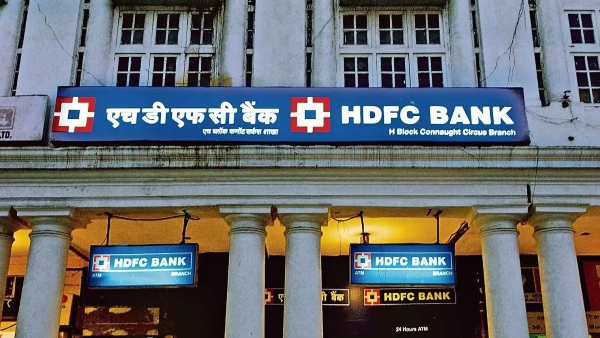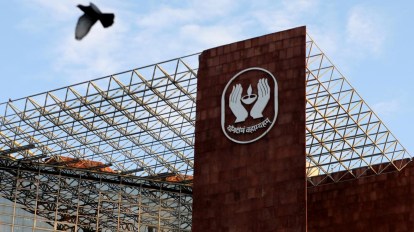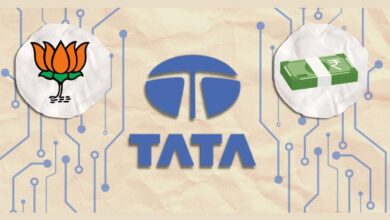LIC’s Approach Not In A Hurry To Increase HDFC Bank Stake; A Prudent Step?
When acquiring stakes within the financial sector it often involves a fine balance of strategy, opportunity, and prudent decision-making. In the case of Life Insurance Corporation (LIC) and HDFC Bank, recent developments have spotlighted the complexities inherent in such endeavours - despite regulatory permissions allowing for an increase in LIC's ownership stake in India's premier lender, HDFC Bank; market insiders suggest a cautious approach may be prudent. Hence, what factors influence LIC's stance, what are the implications of potential stake expansion, and what are the strategic considerations guiding one of India's largest financial institutions in navigating this significant investment opportunity?

LIC is not anticipated to swiftly increase its stake in HDFC Bank, according to individuals familiar with the situation, despite being permitted by the banking regulator to enhance its ownership in the nation’s most valuable lender.
Although HDFC Bank’s stock is currently trading at historically low valuations of approximately 2.1 times its book value, investors, including LIC, might be exercising caution before making any moves to acquire it.
To increase its stake by an additional 4.8%—the maximum allowance granted by the central bank—LIC would need to invest ₹52,000 crore at the prevailing market prices.
Suresh Ganapathy, head of financial services research at Macquarie Capital, noted, “LIC will not immediately boost its stake to 9.9% in HDFC Bank as obtaining additional shares would necessitate a substantial investment.”
He further added, “The approval they’ve received is merely enabling, and they may not necessarily reach the 9.9% mark. Nevertheless, they are likely to seek an increase in their stake given the value present in HDFC Bank’s stock.”

India’s banking regulator has greenlit LIC to acquire an additional 4.8% stake in HDFC Bank, with the possibility of increasing it to a maximum of 9.99% by January 24, 2025. As of December 2023, LIC holds a 5.19% stake in HDFC Bank.
LIC has been advised to secure a significant shareholding in the bank within one year, by January 24, 2025. However, it must ensure that its total holdings do not surpass 9.99% of the bank’s paid-up share capital or voting rights at any given time.
The bank recently unveiled its third-quarter financial results, revealing a reduction in the core net interest margin on total assets, decreasing from 3.65% to 3.4%.
The decrease in margin is attributed to the bank’s merger with its former parent HDFC in July 2023, which impacted margins due to increased borrowing and a loan book with lower yields.
Despite the dip in stock value, HDFC Bank reported a 2.65% uptick in consolidated net profit for the October-December period, reaching ₹17,258 crore compared to ₹16,811 crore in the preceding September quarter.
The bank’s performance, alongside the strategic initiative by LIC to boost its stake, underscores the evolving dynamics of India’s financial sector.
LIC commands a 4% share of the market capitalization in India, boasting an asset size of ₹47.5 lakh crore. Within this, ₹11 lakh-12 lakh crore is allocated to equity value investments.
LIC has witnessed a surge in the market value of its overall holdings with investments spanning across 260 listed companies.
According to data from Ace Equity, the market value escalated to ₹11.89 lakh crore by December 2023 from ₹9.61 lakh crore in the previous December.
Some of the noteworthy performers in LIC’s portfolio include Coal India, Larsen & Toubro, Bajaj Auto, Tata Motors, and NTPC.

Why LIC Needs To Be Cautious
Here’s why an insurance company must exercise vigilance and caution in managing its investment portfolio – insurance companies like Life Insurance Corporation (LIC) operate within a highly regulated environment where financial stability is paramount.
The management of investment portfolios requires meticulous attention to risk mitigation and prudent decision-making to safeguard policyholder funds.
For instance, when considering strategic investments, such as increasing stakes in prominent entities like HDFC Bank, insurance companies must weigh various factors.
In the case of HDFC Bank, despite its stature in the financial sector, recent developments such as the merger with its parent company, HDFC, have introduced complexities that impact financial metrics like net interest margins.
HDFC Bank, India’s largest private sector lender, is navigating a transitional phase following its merger with its parent company last July.
According to sources familiar with the bank’s strategy, it is projected that the full assimilation of this merger will span a period of 4-5 years. Despite an earnings report that surpassed expectations, the bank experienced a significant 15% decline in its stock value.
This decline was attributed to concerns raised by analysts regarding lending margins and sluggish deposit growth, particularly in its second quarterly report post-merger.
The bank anticipates a period of consolidation over the next 4-5 years, during which certain key financial metrics may deviate from pre-merger levels.
Notably, the return on equity, which stood above 17% before the merger, has dipped to 15.8% as of December-end. However, the bank remains focused on achieving profitable growth and aims to restore its return on equity to pre-merger levels within the stipulated timeframe.
Regarding other performance indicators such as net interest margin, deposit growth, and loan growth, the bank acknowledges that these metrics will be influenced by the economic landscape and the strategic decisions made to adapt to it.
In response to criticisms from investors and analysts regarding over-promising and under-delivering on certain metrics, particularly margins, the bank maintains that improvements may take a couple of quarters to materialize.
Deposit growth is expected to be influenced by liquidity deficits in the banking system, leading to higher rates; additionally, the bank aims to maintain a balanced loan-to-deposit ratio of around 80%, which will contribute to overall risk management.
Hence, such developments could potentially affect the overall profitability and stability of the investment. Moreover, fluctuations in stock prices, as seen with the 1.4% decline in HDFC Bank shares, spotlight the inherent volatility in equity markets.
Insurance companies must navigate these fluctuations with prudence, considering the long-term implications on investment returns and financial solvency.
Moreover, while HDFC Bank reported a growth in consolidated net profit, insurance companies must conduct thorough due diligence to understand the underlying drivers of such financial performance.
Factors like changes in regulatory environments, market competition, and macroeconomic conditions can significantly influence the future prospects of investments.
Most importantly, diversification is key to managing investment risks effectively. While HDFC Bank may represent a lucrative investment opportunity, insurance companies must ensure that their portfolios are well-balanced across various asset classes and sectors to mitigate concentration risk.
The Last Bit, the example of LIC’s potential stake increase in HDFC Bank highlights the critical importance for insurance companies to exercise vigilance, caution, and thorough risk assessment in managing their investment portfolios.
And By doing so, insurance companies can uphold their fiduciary responsibility to policyholders and maintain long-term financial stability.





